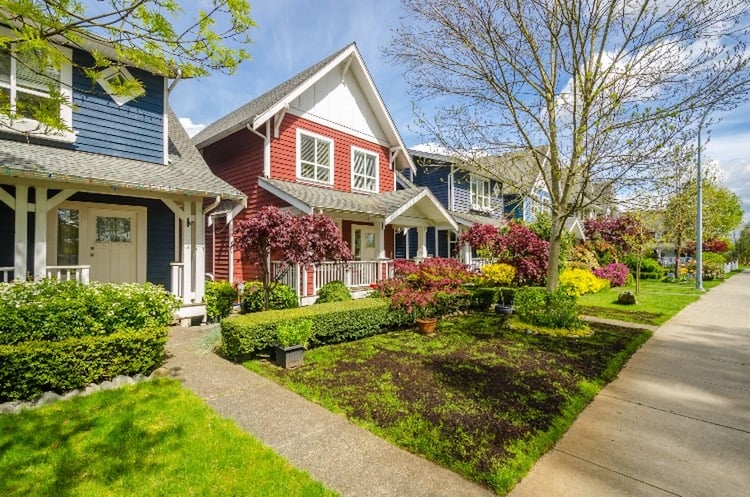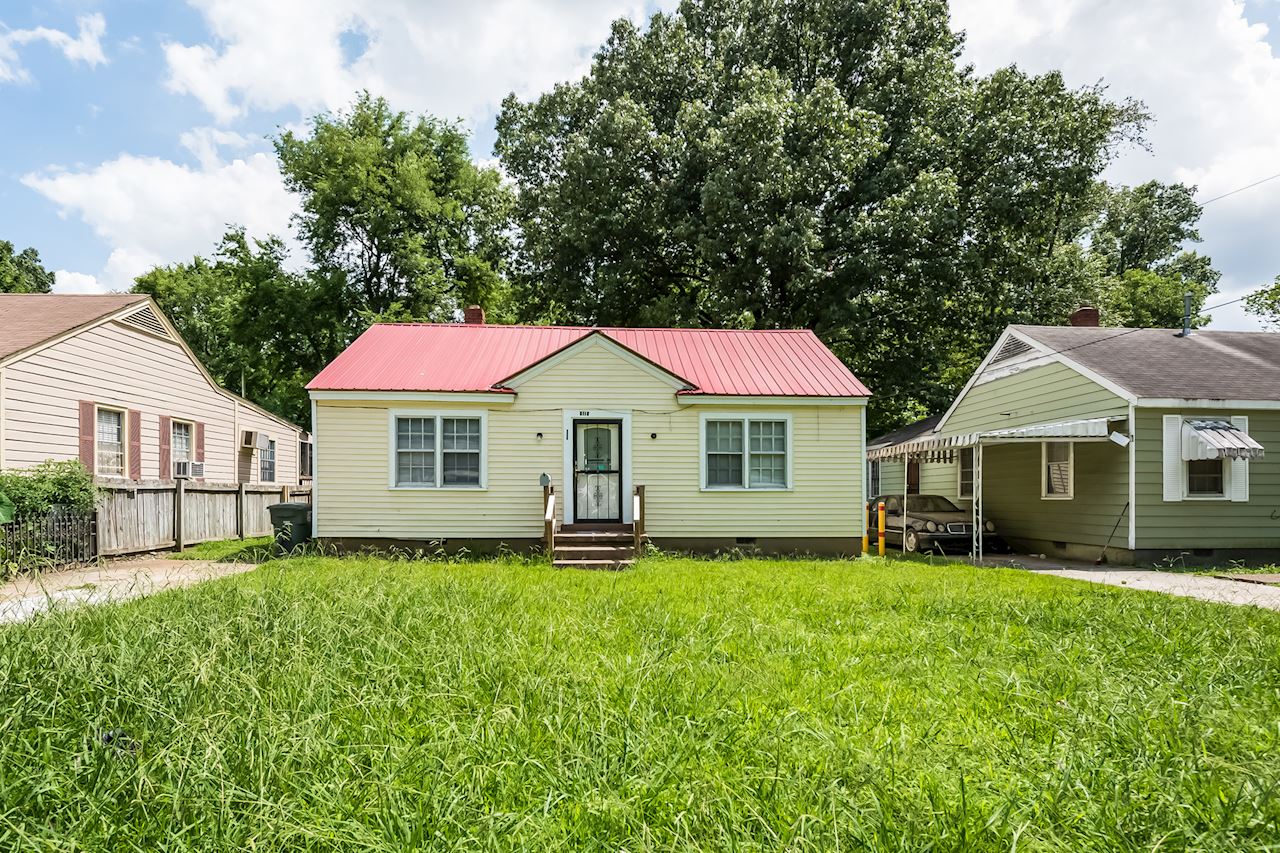Investing in real estate is often compared to a box of chocolates, because there are so many options to choose from. For a growing number of investors, SFRs are increasingly becoming a preferred investment choice.
In this article, we’ll explain what an SFR is, why investors like them, the differences between SFRs and multifamily properties, and two of the best ways to buy and sell SFR real estate.
Key takeaways
- SFR in real estate means single-family rental.
- Single-family rental houses are detached properties with their own yards, carport or garage, and more privacy and space.
- Some of the key reasons why real estate investors like SFR houses are the opportunities for growth in rent prices and property values, current high occupancy rates, the variety of financing options, and potential ease of management.
- When choosing between a SFR and multifamily property, investors often consider issues such as dealing with multiple tenants in the same property, and the higher cost of purchasing and financing a multifamily building.
What is the meaning of SFR in real estate?
The business world is full of acronyms and abbreviations and the real estate industry is no exception. In real estate, SFR stands for “single-family rental” and is used to describe a house that is rented out to a tenant as opposed to being occupied by an owner as a primary residence.
SFRs also have features and amenities that may attract renters. Many people think of residential rental property as a condo, townhomes, apartment, or a unit in a small multifamily property. However, unlike these other types of rental properties, single-family rentals are detached from neighboring properties.
SFRs typically have their own front and backyard, carport or garage, and no neighbors living across the hall. Single-family rentals may be ideal for tenants looking for more space to work from home and greater privacy..
Why real estate investors like SFR
It’s not just tenants who like renting single-family homes. Real estate investors also like SFRs for a variety of reasons:
Rental income
SFRs have the potential to generate recurring cash flow from rental income. Rent from a tenant is used to pay for operating expenses like maintenance and insurance, property taxes, HOA dues, and the monthly mortgage payment if the property is financed. Positive cash flow is money left over at the end of each period after all of the bills have been paid.
Appreciation potential
SFRs also historically appreciate in value. Over the past year, the typical value of middle price tier homes in the U.S. has increased by over 19%, according to Zillow (through September 2021).
Of course, most real estate investors own rental property for longer than just 1 year, so it makes good business sense to look at how home prices have appreciated over the longer term. As the Federal Reserve reports, since the last major recession of 2007-2009, the median price of houses sold in the U.S. has increased by just over 94%.
To be sure, home prices can historically go down as well as up. For example, median house prices declined by about 22% during 2007-2009, and by approximately 5% between Q4 2017 to when the pandemic began.
Tax benefits
Another reason real estate investors like SFR houses is for the tax benefits and deductions that single-family rentals provide. The IRS allows an owner of a rental property to deduct expenses such as property management fees, maintenance and repairs, mortgage interest, insurance, HOA dues, and property taxes from rental income.
Depreciation is another significant tax benefit of owning a SFR. Real estate depreciation is an annual tax deduction used to recover the cost of wear and tear and deterioration of a rental property.
Residential estate investors can depreciate a SFR over a period of 27.5 years. For example, if a single-family rental home has a cost basis of $140,000 (excluding the lot value), an investor may claim an annual depreciation deduction of $5,091 ($140,000 / 27.5 years) to reduce the amount of taxable net income.
Strong demand
Even before the pandemic, SFRs were experiencing record rent growth and occupancy levels. Today, the single-family rental sector continues to outperform, with strong tenant demand causing rent growth to surge and occupancy levels reaching generational highs.
According to the most recent Single Family Rental Investment Trends Report from Arbor:
- Rent growth jumped to 12.7% year-over-year.
- Occupancy rates are at 95.3%.
- Cap rates (the first year percentage return) are 5.8%.
Arbor notes that most indicators are pointing to continued expansion of the SFR sector as the economy continues to recover and demand for single-family rental homes continues to grow.
Numerous financing options
Financing options for an SFR are similar to getting a mortgage for an owner-occupied home. Popular ways to obtain a loan for a single-family rental property include conventional fixed-rate loans, mortgages backed by government-sponsored entities like the FHA, and private loans from an individual or group of real estate investors.
While the options are similar, the terms and conditions for financing a SFR are slightly different. Down payments and interest rates are generally higher with a single-family rental mortgage than with a primary residence.
Most lenders require a down payment of at least 25% of the property purchase price, and interest rates may be slightly higher. To get the best interest rates on a single-family rental property loan, lenders often expect borrowers to have a credit score of 740.
In addition, investors are generally required to have cash reserves of at least 6 months to pay for personal and rental property-related expenses in case vacancies or repair costs are higher than expected.
Improvements increase returns
It can also be easier to make improvements to a SFR that help to increase value and return on investment. Depending on the local real estate market, typical improvements to a single-family rental that may justify a higher monthly rent include a fresh coat of paint, updated flooring, and new appliances.
For example, assume an investor learns from the property manager that the rent could be increased by $100 per month by installing new appliances. If the cost to replace the appliances is $2,500, it would only take about 2 years to pay for the updating.
In the meantime, by making a relatively inexpensive one-time upgrade, an investor could enjoy additional cash flow of $1,200 per year, in addition to any annual rent increases.
Ease of management
SFR houses can be easy to manage.
Some people decide to actively invest in real estate by self-managing a rental property. On the other hand, other investors--including those who are remote real estate investors--generally hire a local property management company to take care of day-to-day details like dealing with tenants and vendors, maintaining the house, and complying with local and state landlord-tenant laws.
Is SFR better than multifamily?
One of the most common debates real estate investors have is whether owning a single-family rental is better than a multifamily property, or vice versa. Here are some of the pros and cons an investor may wish to consider when comparing a SFR to a multifamily building:
SFR pros and cons
- In high demand from both tenants and investors.
- Generate more gross rental income per unit.
- Easy to find and generally easy to finance.
- Vacancy is 100% in between tenant turnover.
- Competition from other real estate investors may make good SFR a challenge to find.
Multifamily pros and cons
- May generate a higher amount of total rental income due to having multiple units.
- FHA or VA loans can be used to finance a small multifamily property when one unit is owner-occupied.
- Purchase prices of small multifamily buildings are generally higher than SFR houses.
- Managing a multifamily rental may be more challenging due to multiple tenants and issues.

Where to buy and sell SFR real estate
Some houses make better SFRs than others. Factors such as median household income, employment rate, school district quality, and neighborhood rating all have an impact on the potential profitability of a single-family rental house.
Investing in a SFR is different from purchasing a home to live in. That’s why investors buy and sell through Roofstock to help make better investment decisions and to transact with buyers and sellers in dozens of the best SFR property markets from coast to coast:
- Roofstock Marketplace: In less than 6 years, investors have completed more than $4 billion in SFR transactions on the Roofstock Marketplace. Sellers can collect rental income right up until the day the transaction closes, and avoid the hassles of disturbing the tenant with open houses and showings to the general public. Buyers may have the opportunity to buy a tenant occupied home and begin collecting rent immediately following closing.
- Roofstock Offers: This innovative iBuyer program from Roofstock is ideal for sellers who want to sell quickly for all cash. Closings often occur in 14 business days or less, and the service fee is just 3%. Simply enter the property address on Roofstock Offers to learn if a house is eligible to receive an all-cash offer.
Final thoughts
Investors have a variety of options for investing in real estate, from SFR houses to condos, townhomes, and small multifamily properties. The demand from both tenants and investors for single-family rentals was strong even before the pandemic struck, a trend that appears likely to continue. Rental prices have been growing by double digits, SFR values have been rising, and occupancy levels are at generational highs.










